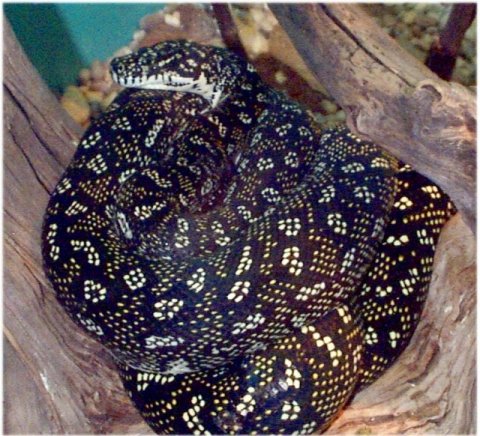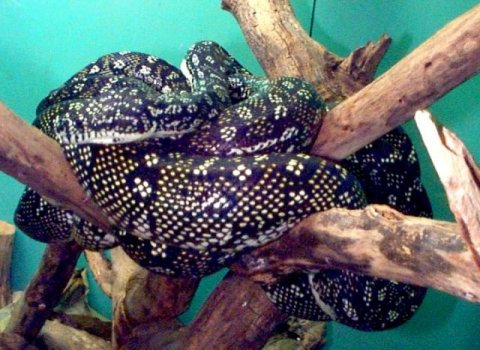General
information:
The Diamond Python is a member of a group called
for "carpet pythons" for their beautiful patterns. In the wild, males
outnumber females by a factor of 5 to 10 fold. Females lay clutches
of 4-16 eggs. The female snake coils around her eggs and shivers to
incubate them until they hatch. The brooding coil helps the female
to conserve her own body heat. During the incubation period, the
female may lose 30% of its body weight. The snakes are nocturnal,
spending their evenings in search of prey. However, they are more
ambush feeders than active hunters, lying in wait for potential prey
moving along animal trails. As the snake grows, mammals make up a
larger part of its diet. Diamond Pythons are constrictors that strike
quickly and then coil themselves around their prey. The bones in
the jaw and the skull are loosely connected to allow their mouths
to widen in order to consume even animals larger than themselves.
Special adaptations:
Pythons have a row of heat-sensing
pits on the upper lip, and teeth in the upper jaw. Although their
eyesight is poor, they have a good sense of smell and rely on that
plus their ability to sense the approach of warm-blooded prey. Diamond
pythons can tolerate lower temperatures than other python species.
Their dark color may increase their ability to absorb heat.
DPS
The Diamond Python was briefly threatened by the
outbreak of a disease called DPS (Diamond Python Syndrome). During
this outbreak, the body structure of the pythons were weakened, and
when held they felt jelly like and some snakes experienced tremors.

